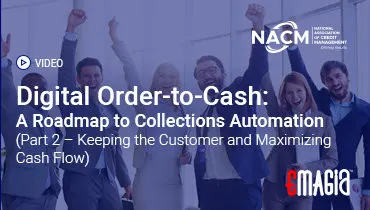In a world where physical currency is becoming a relic of the past, understanding electronic payments is no longer optional—it is a fundamental requirement for modern commerce. The question, what is electronic payment system, is at the heart of this digital revolution. An e-payment system is more than just a convenience; it is a complex infrastructure that enables secure and instantaneous financial transactions without the need for cash or checks. This comprehensive guide will take you on a deep dive into the world of online payment methods, from the foundational principles to the various types of e-payments and the critical role they play in global commerce. Whether you are a business owner looking to optimize your operations or an individual seeking to navigate the digital economy, mastering the intricacies of an electronic payment system is key.
We will break down the complex mechanisms of electronic payment processing into simple, understandable terms. From electronic pay to the broader concept of e-payment systems, you will learn how funds are transferred securely and efficiently across the globe. This article is designed to be a definitive resource, offering insights that will empower you to make informed decisions about your financial and business strategies. By the end, you will have a clear understanding of what electronic payment means and why it has become the standard for modern transactions.
What is an Electronic Payment: Defining the Digital Transaction
At its core, an electronic payment is any transfer of funds from one account to another that is conducted via an electronic or online medium. This eliminates the need for physical currency, paper checks, or traditional manual processes. When you use a credit card to buy something online, transfer money from your bank account, or tap your phone at a coffee shop, you are engaging in an e payment. The entire process, from initiation to final settlement, occurs through a digital network. The e payment meaning is tied directly to this non-physical transfer of value. This system is the backbone of e-commerce, mobile commerce, and virtually all modern financial interactions.
The transition to e-payments has been driven by the need for speed, convenience, and security. A traditional paper-based payment can take days or even weeks to clear. An electronic payment system, by contrast, can settle transactions in real-time or within hours. This efficiency is a massive advantage for both consumers and businesses. The simple fact that you can pay for a service from your living room at any time of day, or that a business can receive a payment from a customer on the other side of the world almost instantly, highlights the transformative power of a well-defined electronic payment process.
The Core Components of an Electronic Payment System: The Engine Behind the Transaction
To fully understand what is an electronic payment system, it is essential to break down its key components. These elements work in concert to ensure a transaction is not only fast but also secure and reliable. The system is a complex network of hardware, software, and financial institutions that come together to enable a seamless transfer of funds. This interconnectedness is what makes electronic payment processing so effective and ubiquitous today. Understanding these pieces provides clarity on the entire e payment system.
Payment Gateway: The Digital Bridge for Online Payment Methods
A payment gateway is the digital equivalent of a physical point-of-sale (POS) terminal. It is a service that authorizes payments for e-commerce websites and physical stores. When a customer enters their card details on a website, the payment gateway securely encrypts this data and sends it to the payment processor. It acts as a crucial intermediary, protecting sensitive information and facilitating communication between the customer and the merchant’s bank. Without a robust payment gateway, a business could not accept any form of electronic payment safely. This component is essential for all types of online payment methods.
Payment Processor: The Network That Powers E-payments
Once the payment gateway sends the encrypted data, the payment processor takes over. The processor works with both the acquiring bank (the merchant’s bank) and the issuing bank (the customer’s bank) to verify the funds and transfer the money. The processor checks for sufficient funds, confirms the card’s validity, and sends the transaction details to the card network (e.g., Visa, Mastercard). The processor is the central hub for all forms of electronic payment processing, ensuring a smooth and rapid flow of funds. The efficiency of this component directly impacts the speed of the entire transaction, which is why businesses prioritize a fast and reliable epayment service.
Key Types of Electronic Payment Methods: A Modern Financial Arsenal
The landscape of electronic payment methods is vast and constantly evolving. While they all serve the same core function, each type has unique features and is suited for different purposes. Knowing the difference between these online payment methods is critical for both consumers and businesses. This is where we truly answer the question, what is electronic payment system. We will explore the most common e-payment options and their specific applications in today’s economy.
Credit and Debit Card Payments: The Classic E-payments
Credit and debit cards are perhaps the most well-known and widely used forms of electronic payment. A debit card draws funds directly from a checking account, while a credit card allows the user to borrow funds from a line of credit. When you swipe, tap, or enter your card details online, the transaction is processed through a payment gateway and a payment processor. These transactions are so common that they have become synonymous with the term e payments. They are foundational to both in-person and online commerce and a primary example of a payment electronic system in action.
ACH Payments: The Backbone of Electronic Payment Solutions
The Automated Clearing House (ACH) network facilitates direct bank-to-bank transfers in the United States. This is a common method for direct deposits, bill payments, and business-to-business (B2B) transactions. ACH payments are generally less expensive to process than card payments, though they typically take a few business days to settle. They are a powerful example of electronic payment systems that enable large-volume, recurring transactions. When you describe how to make an electronic payment, an ACH transfer is often the process described for direct bank-to-bank funding.
Mobile Wallets and Digital Payments: The Future of Electronic Pay
Digital wallets, like Apple Pay, Google Pay, and Samsung Pay, store a user’s payment information securely on a mobile device. These wallets often use Near Field Communication (NFC) technology to enable contactless payments at a POS terminal. The security is enhanced through tokenization and biometric authentication. The convenience and speed of these methods are rapidly making them one of the most popular epayment options for consumers. This is a prime example of a modern epayment system. They truly embody what epayments are all about: speed and convenience.
The Advantages of Electronic Payments: Speed, Security, and Efficiency
The shift from traditional to electronic payment systems is not just a technological trend; it is a strategic move driven by clear and compelling benefits. These advantages apply to both businesses and consumers, making the use of electronic payments a win-win for everyone involved. The benefits of a well-defined electronic payment system are numerous and far-reaching.
Unmatched Speed and Convenience
The primary advantage of a what is an e payment is speed. Transactions that used to take days now clear in minutes or even seconds. This accelerates the cash flow for businesses and provides instant gratification for customers. The ability to make payments from anywhere in the world, at any time of day, using a simple smartphone, highlights the unparalleled convenience of these systems. This ease of use is a core part of the e pay meaning.
Enhanced Security and Fraud Prevention
Contrary to popular belief, electronic payments are often more secure than physical cash or checks. They utilize multiple layers of security, including encryption, tokenization, and two-factor authentication, to protect sensitive data. Advanced fraud detection systems monitor transactions in real time, flagging and blocking suspicious activity. This makes a modern epayment system far more secure than carrying around a wallet full of cash. The electronic payment processing is designed with security as a top priority.
Reduced Costs and Improved Reporting
For businesses, implementing an e payment system can significantly reduce operational costs. It eliminates the need for expensive paper checks, postage, and manual data entry. Furthermore, electronic payment solutions provide automated, detailed records of every transaction. This makes financial reconciliation, auditing, and tax preparation much simpler and more accurate. The ability to see and analyze your financial data in real-time is a powerful benefit of an online payment system.
How Emagia Helps: Redefining Electronic Payments and Cash Application with AI
While the various electronic payment methods provide the foundation for digital commerce, the true challenge for businesses is managing and reconciling these payments at scale. This is where Emagia’s intelligent platform transforms the financial process. Emagia goes beyond a simple e-payment system by providing a comprehensive, AI-powered solution for accounts receivable. Their platform seamlessly integrates with all major epayment systems, from credit cards and ACH to modern mobile wallets. Emagia’s AI technology automates the entire cash application process, instantly matching incoming electronic payments to open invoices, regardless of the payment method. This eliminates the manual effort of data entry and reconciliation, freeing up finance teams to focus on strategic tasks. Emagia’s solutions provide a single, unified view of all incoming payments, accelerating cash flow and ensuring unparalleled accuracy. Their robust platform handles everything from secure payment portals for customers to intelligent forecasting of cash receipts, making it a critical tool for businesses seeking to master their financial operations in the age of electronic payments. It moves the entire epayment system from a simple transaction tool to a strategic financial asset.
FAQ: Frequently Asked Questions about Electronic Payment Systems
What is electronic payment system?
An electronic payment system is a method of making financial transactions using digital networks and electronic devices. It allows for the transfer of funds without the use of cash or paper checks. This includes payments made via credit cards, debit cards, bank transfers (like ACH), and mobile wallets. The system ensures that a transaction is conducted securely and efficiently.
What is an e payment?
An e payment, or electronic payment, is a broad term for any transaction that occurs digitally. It encompasses a wide range of methods, from swiping a credit card to using a mobile wallet app or transferring money online via a bank’s website. The term what is e payment essentially refers to the entire ecosystem of digital transactions.
What are the benefits of electronic payments?
The benefits of electronic payments include speed, convenience, and security. They eliminate the need for physical currency, making transactions faster and more efficient. They also offer a higher level of security through encryption and authentication methods, which protect users from fraud. For businesses, they reduce operational costs and provide better financial visibility and reporting.
What is the difference between an e-payment and an online payment?
While often used interchangeably, the term e-payment is broader. An e-payment refers to any electronic transaction, whether it happens in a store (e.g., swiping a card) or online. An online payment, on the other hand, specifically refers to transactions conducted over the internet, such as making a purchase on a website or paying a bill through an online banking portal. All online payments are e-payments, but not all e-payments are online.
What are some examples of electronic payment systems?
Examples of e-payment systems include payment gateways like Stripe and PayPal, credit card networks like Visa and Mastercard, mobile wallets such as Apple Pay and Google Pay, and national bank transfer systems like the ACH network. Each of these systems provides a unique way to facilitate electronic payments for both businesses and consumers.



